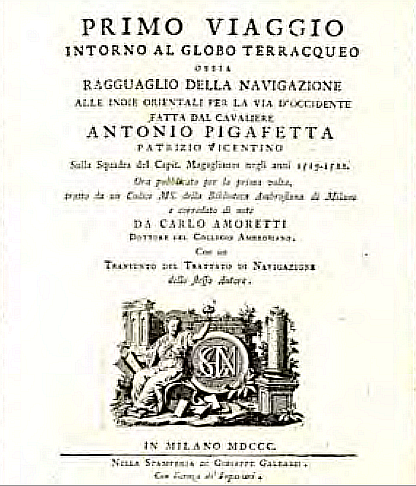Getting our Philippine history right after 500 years – Part 18For over 276 years a false narrative about the Magellanic sojourn in the Philippines in 1521—that the Spanish fleet anchored “in the island of Butuan” and held the first Holy Mass there and not in Mazaua—remained unchallenged and unrectified in world history.
In 1797, however, this narrative unraveled when the long-lost Italian manuscript of Antonio Pigafetta on Magellan’s voyage was accidentally found by the Augustinian priest Dr. Carlo Amoretti at the Biblioteca Ambrosiana in Milan. The manuscript categorically stated that Mazaua was that First Mass site and described the landmark event in great, unmistakable detail.


But in two footnotes to the Pigafetta manuscript that he had heavily revised, Dr. Amoretti guessed without any substantial basis that Mazaua might be the “Limassava” in a Philippine map by the French cartographer Jacques Bellin. Recall that in 1667, the Jesuit historian Francisco Combes simply invented “Limassava” for his imagined first stopover First Mass island that did not use the prefix “Di-“ as his Jesuit confrere Fr. Francisco Colin had done five years before for his likewise invented “Dimasawa” island. By a quirk of history, Combes’s “Limassava” got into a Philippine chart drawn in 1734 by another Jesuit priest, the cartographer Fr. Pedro Murillo Velarde, that in turn the cartographer Bellin copied for his own update of the Philippine map.
Such incredible twists-and-turns in Mazaua’s historiography make it a must for Pigafetta’s narrative to be presented here in sufficient detail to show how Giovanni Ramusio’s misreading and garbling of it had irremediably misled many history and travel writers, translators, and anthologists the world over. Ramusio’s unrectified mistake, made murkier by well-intentioned but ill-informed clerics, academics, and paleographers as well as by incautious investigative bodies over the centuries, eventually gave birth to the monumental hoax that is Limasawa as the First Mass site.
To begin, here in James Alexander Robertson’s definitive English translation of Pigafetta's recovered manuscript is the Venetican chronicler's narrative about how Ferdinand Magellan’s fleet anchored on an uninhabited Philippine island on March 17, 1521 for security and to get water and have some rest.
“The island where we were is called Humunu [Homonhon]; but inasmuch as we found two springs there of the clearest water, we called it
Acquada da li buoni Segnialli [i.e., “the Watering-place of good Signs”]…
“On the afternoon of holy Monday… March twenty-five, ... we shaped our course toward the west southwest between four small islands, namely, Cenalo, Hiunanghan, Ibusson, and Abarien... On Thursday morning, March twenty-eight, as we had seen a fire on an island the night before, we anchored near it…
“Early on the morning of Sunday, the last of March, and Easter-day, the captain-general sent the priest with some men to prepare the place where mass was to be said… (W)e landed with about fifty men, without our body armor, but carrying our other arms, and dressed in our best clothes. Before we reached the shore with our boats, six pieces were discharged as a sign of peace…(T)he two kings embraced the captain-general, and placed him between them. We went in marching order to the place consecrated, which was not far from the shore. (T)he captain sprinkled the entire bodies of the two kings with musk water. The mass was offered up. The kings went forward to kiss the cross as we did… When the body of our Lord was elevated, they remained on their knees and worshiped Him with clasped hands…”
Pigafetta then described the island where the mass was held:
“It lies in a latitude of nine and two-thirds degrees toward the Arctic Pole, and in a longitude of one hundred and sixty-two degrees from the line of demarcation. It is twenty-five from the Acquada, and is called Mazaua... We remained there seven days, after which we laid our course toward the northwest, passing…Ceylon, Bohol, Canighan, Baybai, and Gatighan... Thus did we go to Zubu from Gatighan, the distance to Zubu being fifteen
leguas.*”
Part 19 will show how other history writers garbled Pigafetta’s narrative.
------------
*Legua – Pigafetta supplied for his legua these values: 4 miles at sea and 3 miles on land.(Next:
Getting our Philippine history right after 500 years – Part 19) August 8, 2021
This essay, 2,056th of the series, appeared in the column “English Plain and Simple” by Jose A. Carillo in the Campus Press section of the July 29, 2021 Internet edition of The Manila Times,
© 2021 by the Manila Times Publishing Corp. All rights reserved.Read this article online in
The Manila Times:
“Getting our Philippine history right after 500 years - 18”To listen to the audio version of this article, click the encircled double triangle logo in its online posting in
The Manila Times.